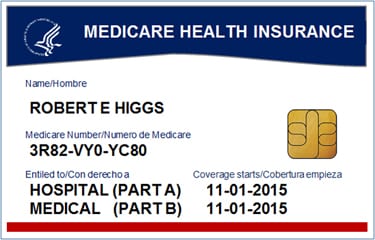WASHINGTON (PRWEB) DECEMBER 20, 2018 – Has the time finally come to make President George W. Bush’s 2004 State of the Union vision of “every American having ownership of their electronic medical records a reality”?

The Office of Management and Budget (OMB) looks to modernize the healthcare system with 21st Century technology. OMB officials along with representatives from the Centers of Medicare and Medicaid (CMS) met with representatives from ISeeYouCare, INC yesterday to witness a demonstration of the company’s Smart Health Card Data Management System and its potential impact on the US Healthcare System.
According to officials at the meeting, the OMB expressed “amazement” for such an innovative solution to the issue of “interoperability” using existing standards as implemented and utilized throughout the healthcare industry.
The solution is simple in nature and includes but four components; a Smart EMV Enabled Smart Card, a cloud based Virtual Lifetime Personal Health Records Portal, a simple low-cost smart card reader and a client-side APP. Together they combine for one amazing, long sought-after solution. What it does is serve as a data collection system for medical records from every care provider a patient/consumer visits throughout the healthcare landscape. The system has the ability to collect and aggregate medical data from every major EHR (Electronic Health Records) vendor such as EPIC, Cerner, Allscripts, NexGen, eClinicalWorks, My HealtheVet (VA) and all other Stage II Certified EHR’s.
Additionally, and central to the mission of the company, this technology provides the means from which to present and make available every piece of medical data on a given patient to the care provider at the point of care. This ensures that care provider(s) can make the most clinically informed decisions of their life; absent a single piece of data, that if known, would have altered that care providers assessment, diagnosis and care plan for that patient/consumer. Everyone in the meeting agreed, “that would lead to better and improved outcomes for the patient!”!
The Smart Health Card would serve as a patient/consumer’s health benefit card and would be based on smart chip technology and supported by a cloud-based medical records repository that actually “belongs to the patient” not merely provided to the patient by the care provider or hospital system. The patient would have full ownership, control and disposition of all data. That’s a “Big Deal” according to Dr. Jay Sanders, the founder and former President of the American Telemedicine Association. “Couple that with some of the amazing features and capabilities of the cloud-based portal to include AI, and you have a disruptive technology that has the potential to be a game changer” reported Dr. Sanders.
According to Robert Higgs, President/CEO of ISeeYouCare, Inc., the developer of the technology, “this solution has been around for some time now”. “In fact, the same solution that was reviewed and discussed during the meeting was the subject of an award received by the company in 2016 as being One of the Top Twenty Federal IT Innovation of the year as judged by a panel of judges representing CMS, the VA and DOD.” Mr. Higgs went on to report, “that if it weren’t for the technologies financial impact to the industry and as such being dubbed disruptive, the technology would have already been adopted by private insurers, the Federal (CMS) and State Medicaid Agencies”.
Apparently, when you create a disruptive technology that has the potential to save the American Healthcare System hundreds of billions of dollars on a recurring basis and at the same time improve outcomes and many other benefits, there are winners and “losers”. You see, anytime you reduce waste (unnecessary diagnostics test and fraud) on a colossal scale, there are stakeholders who are affected by loss of revenue.
According to GAO Reports, the American Healthcare System “wastes” some $700 Billion a year on unnecessary and duplicative diagnostic tests and another $68 Billion a year in “fraud”. Everybody in government knows that the present $3.4 Trillion a year and growing cost of healthcare, America can no longer sit idly by and fail to address the problem of waste.
The solution has been independently scored by HMS, a leading national auditing company in the healthcare industry as having a potential savings of $2,028 per beneficiary per year. Doing some simple math, if applied to the nation’s elderly population representing, the “baby boomers” enrolled in the CMS Medicare program, the savings could represent as much as $111 Billion/year!
Congress is considering several initiatives to thwart escalating healthcare costs and subsequent impact to the nation’s debt crisis to include; “capping” Medicaid reimbursements to States and other like provisions in the form of “cuts” that Americans receive as healthcare benefits.
Wouldn’t a better approach be, rather than cut healthcare service benefits that patients/consumers “need” as a means to cut healthcare cost, that we simply cut the “waste” associated with providing the services actually received?
Maybe the time for some disruptive change has come to the American Healthcare System. Sometimes, you have to stand at the “abyss” before you muster the courage to defy special interest groups and do the right thing. Just maybe, that time is now!
